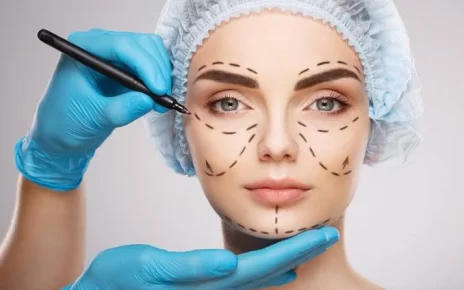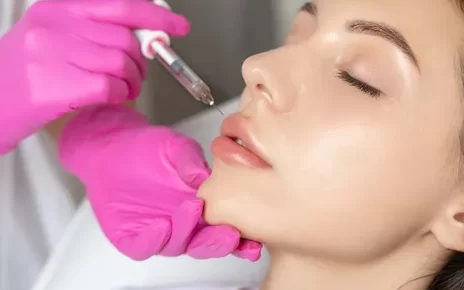Are you struggling with imbalanced hormones? Hormone replacement therapy for men and women might just be the solution you’ve been searching for. Hormones play a vital role in our overall health and well-being, influencing everything from our energy levels and mood to our libido and cognitive function. When hormones become imbalanced, it can lead to a variety of symptoms, including fatigue, weight gain, depression, and decreased sexual desire.
In this article, we delve into the science behind hormone replacement therapy (HRT) and how it can help restore hormonal balance in both men and women. Whether you’re experiencing symptoms of menopause, andropause or simply looking to optimize your hormone levels, HRT offers a safe and effective solution.
Understanding the Role of Hormones in the Body
Hormones are chemical messengers that regulate numerous bodily functions, playing a crucial role in maintaining overall health. They are produced by various glands in the endocrine system and are released into the bloodstream, where they travel to different parts of the body to carry out their specific functions.
The endocrine system consists of several glands, including the pituitary gland, thyroid gland, adrenal glands, and reproductive organs, such as the ovaries in women and testes in men. Each gland produces specific hormones that regulate various bodily processes, such as metabolism, growth, reproduction, and mood.
Hormonal imbalances can occur due to various factors, including aging, stress, certain medical conditions, and lifestyle choices. Understanding the role of hormones in the body is crucial in recognizing the signs and symptoms of hormonal imbalance and seeking appropriate treatment.
Signs and Symptoms of Hormonal Imbalance
When hormones are imbalanced, it can manifest in a wide range of symptoms that significantly impact one’s quality of life. The signs and symptoms of hormonal imbalance vary depending on the specific hormone involved and whether it is deficient or in excess.
According to Forever Young, for women, hormonal imbalances often occur during menopause, leading to symptoms such as hot flashes, night sweats, mood swings, vaginal dryness, and decreased libido. Similarly, in men, hormonal imbalances can occur during andropause, resulting in symptoms like low energy, reduced muscle mass, erectile dysfunction, and mood disturbances.
Both men and women may experience common symptoms of hormonal imbalance, including fatigue, weight gain, insomnia, depression, anxiety, hair loss, and cognitive difficulties. Recognizing these signs and symptoms is crucial in seeking appropriate treatment and restoring hormonal balance.
Benefits of Hormone Replacement Therapy
Hormone replacement therapy (HRT) offers a range of benefits for men and women experiencing hormonal imbalances, as highlighted by Forever Young. By supplementing deficient hormones or regulating excessive hormone levels, HRT can help alleviate symptoms and improve overall well-being.
For women going through menopause, HRT can provide relief from hot flashes, night sweats, mood swings, and other menopausal symptoms, according to Forever Young. Additionally, it can help prevent osteoporosis and reduce the risk of cardiovascular disease. In men, HRT can improve energy levels, muscle mass, sexual function, and overall quality of life.
In addition to symptom relief, Forever Young emphasizes that hormone replacement therapy has positive effects on bone health, cardiovascular health, cognitive function, and overall longevity. However, it is essential to weigh the benefits against the potential risks and side effects associated with HRT. Consulting with a healthcare provider, such as those at Forever Young in Gulfport, MS, can help individuals make informed decisions about their hormonal health and treatment options.
Risks and Side Effects of Hormone Replacement Therapy
While hormone replacement therapy offers numerous benefits, it is not without risks and potential side effects. The risks and side effects vary depending on the type of HRT used, the dosage, and individual factors such as age, medical history, and lifestyle.
For women, the use of synthetic hormones, such as those found in traditional hormone replacement therapy, may increase the risk of certain cancers, blood clots, and cardiovascular disease. However, the use of bioidentical hormones, which are molecularly identical to the hormones naturally produced by the body, may offer a safer alternative.
In men, HRT may increase the risk of prostate enlargement or prostate cancer. It is crucial to undergo regular prostate screenings and consult with a healthcare professional before starting any hormone replacement therapy regimen.
It is important to note that hormone replacement therapy should be personalized and monitored by a qualified healthcare professional to minimize the risks and maximize the benefits. Regular check-ups and hormone level monitoring are essential to ensure the safety and effectiveness of the treatment.
The Science Behind Hormone Replacement Therapy
The science behind hormone replacement therapy lies in understanding the intricate balance of hormones in the body and restoring it through supplementation or regulation. Hormone replacement therapy aims to mimic the natural hormone levels that were present during the individual’s reproductive years, thus alleviating symptoms and improving overall well-being.
Different types of hormones can be used in hormone replacement therapy, including estrogen, progesterone, testosterone, and thyroid hormones. These hormones can be administered in various forms, such as pills, patches, creams, gels, injections, or pellets. The choice of hormone and administration method depends on individual factors and treatment goals.
The effectiveness of hormone replacement therapy depends on proper diagnosis, personalized treatment plans, and regular monitoring. Working closely with a knowledgeable healthcare professional is crucial in achieving optimal results and minimizing potential risks.
Different Types of Hormone Replacement Therapy
Hormone replacement therapy comes in various forms, each with its own advantages and considerations. The choice of hormone replacement therapy depends on factors such as the individual’s hormonal needs, personal preferences, and medical history.
Traditional hormone replacement therapy (HRT) typically involves the use of synthetic hormones, which are similar to those produced by the body but not identical. Bioidentical hormone replacement therapy (BHRT), on the other hand, uses hormones that are molecularly identical to the ones naturally produced by the body.
Other forms of hormone replacement therapy include hormone pellets, which are inserted under the skin and release hormones slowly over time, and hormone patches, which are applied to the skin and deliver hormones transdermally. Each type of hormone replacement therapy has its own pros and cons, and the choice should be based on individual needs and preferences.
Choosing the Right Hormone Replacement Therapy for Men
Hormonal imbalances in men can be effectively addressed through hormone replacement therapy. The choice of hormone replacement therapy for men depends on the specific hormonal imbalances and treatment goals.
Testosterone replacement therapy (TRT) is commonly used to restore testosterone levels in men with low testosterone. TRT can improve energy levels, muscle mass, libido, and overall quality of life. However, it is crucial to work with a healthcare professional to determine the appropriate dosage and administration method to minimize potential risks.
Other hormones, such as thyroid hormones or DHEA (dehydroepiandrosterone), may also be considered in certain cases. Consulting with a healthcare professional who specializes in hormone replacement therapy for men is essential in developing a personalized treatment plan.
Choosing the Right Hormone Replacement Therapy for Women
Hormone replacement therapy for women is commonly used to address the symptoms of menopause and restore hormonal balance. The choice of hormone replacement therapy depends on factors such as symptoms, medical history, and personal preferences.
Traditional hormone replacement therapy (HRT) may involve the use of synthetic hormones, such as estrogen and progestin. Bioidentical hormone replacement therapy (BHRT) offers a more natural alternative, using hormones that are identical to the ones naturally produced by the body.
The choice between traditional HRT and BHRT should be made in consultation with a healthcare professional who can assess individual needs and provide personalized recommendations. Regular monitoring and adjustments to the treatment plan are essential to ensure optimal results and minimize potential risks.
Conclusion: The Importance of Consulting a Healthcare Professional
Hormone replacement therapy offers a safe and effective solution for restoring hormonal balance in both men and women. However, it is important to approach hormone replacement therapy with caution and consult with a qualified healthcare professional.
Understanding the role of hormones in the body, recognizing the signs and symptoms of hormonal imbalance, and weighing the benefits against the potential risks are crucial steps in making informed decisions about hormone replacement therapy.
By working closely with a knowledgeable healthcare professional, you can develop a personalized treatment plan that addresses your specific hormonal needs and goals. Regular check-ups and hormone level monitoring will ensure the safety and effectiveness of the treatment, allowing you to experience the full benefits of hormone replacement therapy.
Don’t let imbalanced hormones hinder your quality of life any longer. Take control of your health and well-being by exploring the science behind hormone replacement therapy and finding the right treatment option for you. Consult with a healthcare professional today and embark on your journey to hormonal balance and vitality.
Remember, a balanced life begins with balanced hormones.





